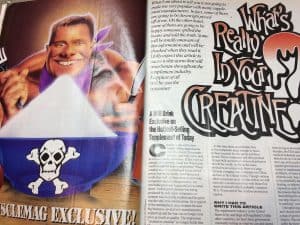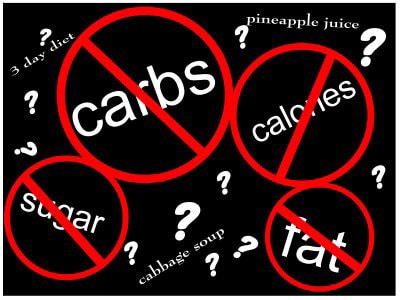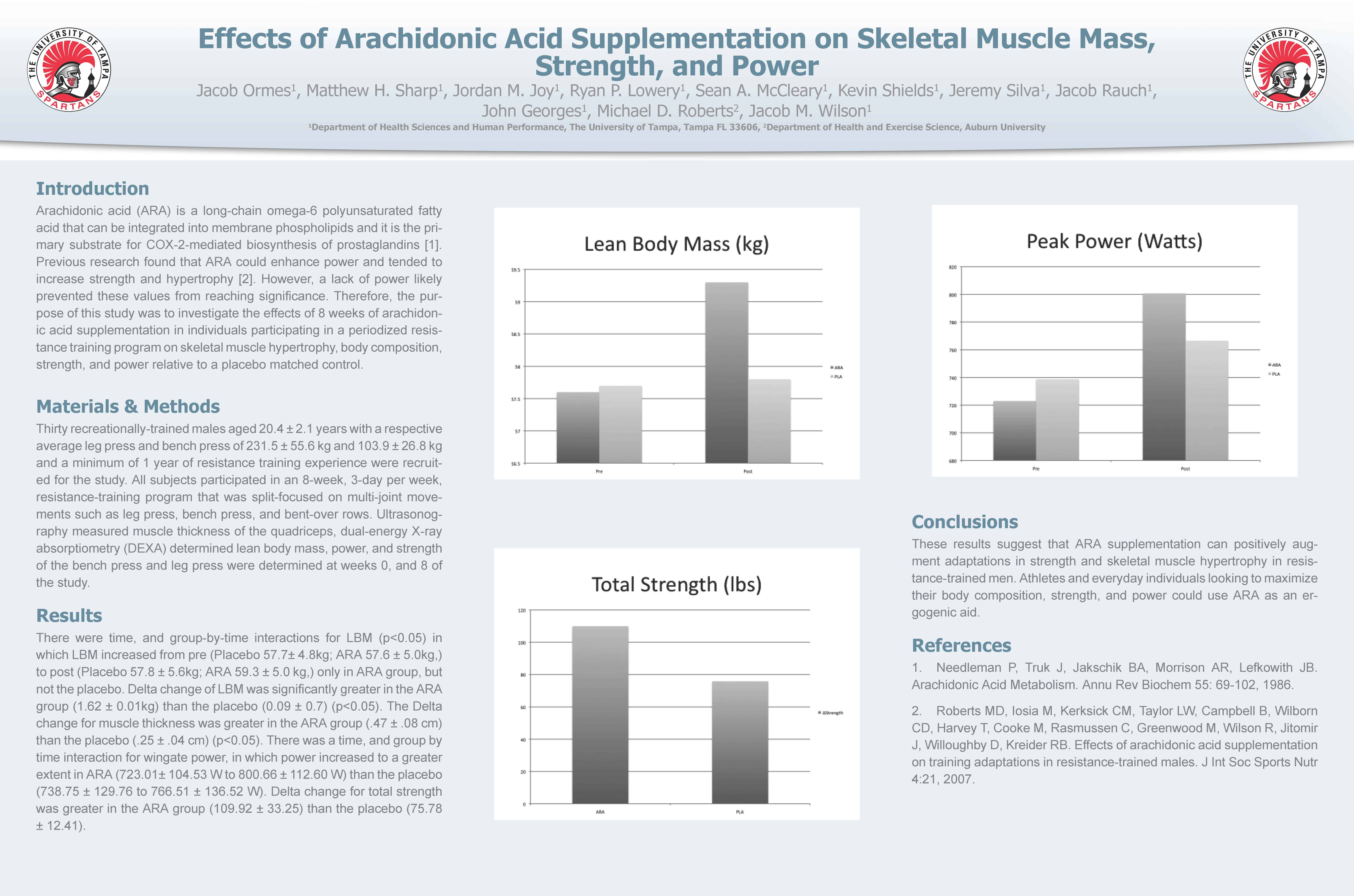(Readers Note 2009: Make sure to read my updated comments at the end of this article!)

The original article in MuscleMag International
What I am about to tell you is not going to make me a very popular person with many supplement manufacturers. In fact, some of them are going to be down right pissed off at me. On the other hand, some of them are going to be happy someone spilled the beans and told the truth. Finally, some of them will be totally unaware of this information and will be shocked when they read it. Basically, I fully expect this article to cause a sh*% storm that will reverberate throughout the supplement industry. The only people who I know are going to be happy about this article is the consumer, but I am getting ahead of myself. As we all know, creatine is one of the best bodybuilding supplements ever discovered. It increases strength, lean body mass, and, to a lesser extent, endurance. If that were not enough, it’s relatively cheap to boot! What more could we ask for from a supplement? When creatine was first introduced it was sort of pricey, but no one really cared because it worked so well. As time went on and more companies began selling creatine, the inevitable price war began and prices came down. At that point creatine was only being produced by a few companies, so creatine was basically creatine and the price was the only real consideration. As is typical of the market place, once creatine became big business, several new manufacturers popped up and it became no longer a price war as much as a quality war. The expression “creatine is creatine” no longer holds true. More on that shortly.
At this time there are probably four-five companies large enough to mass produce creatine for the sports nutrition market. These companies in turn sell their product in huge bulk amounts to various distributors around the world. As far as the mass producers are concerned, there is a large German company, two companies out of China, and two in the United States. Though there are various other companies, for this article we will basically concern ourselves with these five major producers which probably comprise 80-90% of the creatine production market.
Why I had to write this article
The supplement industry in the United States is by and large a self-regulated industry. Unlike other countries, we (the USA) don’t have government constantly telling us what we can and cannot do with our supplements. Though they have been trying to discredit supplements for decades, the FDA and pharmaceutical/ medical industrial complex have largely failed to do so. As a self-regulated industry, we must do just that. Let me state here and now, I am all for self-regulation and totally against government regulation when it comes to supplements. When we find gross problems, we have to expose them no matter what the cost. Any supplement that is found to be potentially dangerous, terribly misleading, or otherwise a total scam, must be exposed as such. If we don’t do it, then we allow the “powers that be” (who have an interest in discrediting the supplement industry) to get one step closer to the Orwellian scenario of other countries. I thought long and hard as to whether or not I should write this article, but in the end, as a person of good conscience and ethics, I knew I had to. In the end, it will cost the entire supplement industry far more than any one loss could ever cost a single company if problems with a certain product are not exposed.
As far as I am concerned, this is us airing out or own dirty inter-industry laundry and policing our own, instead of waiting for the “don’t confuse us with the facts” popular media or other groups to come after the supplement industry. I know it must sound like I am almost apologizing for writing this article, and in a way I am. It could potentially cost certain people a great deal of money. On the other hand, it could also make some other person a great deal of money, depending on where they fall (this will make more sense to the reader as you read along). In the end, the truth can never been denied, it can only be delayed. With each day of delay, the cost to everyone goes up. Nuff said.
Are you getting more than you paid for?
Most of us are always happy when we get more than we paid for, but in some instances, it’s not such a good idea. If we are buying say vitamin C and the label says “500mg per capsule” and laboratory analysis reveals it contains 600mg, then that is a great thing. However, if we test a product and not only does it contain what the label claims, but several other compounds we did not know were in there and had no place being in there, then that’s a completely different story. For example, when the amino acid L-Tryptophan was taken off the market for the death of several people, it was not because of the L-Tryptophan itself, but because of a chemical contaminant found in a batch of the L-tryptophan that was not supposed to be there. This was a perfect example of getting more than you paid for in the worst possible scenario. What I am going to write about in this article certainly is not as bad as the L-tryptophan fiasco, but it could be a potential health concern.
So after that long, cryptic, and bizarre introduction, what am I getting at? Recently, a company tested the five largest creatine manufacturers products and tested the products of various distributors from the USA, Germany, Great Britain, and other countries. At this time, the company who did the testing wishes to remain anonymous, lest they be accused of throwing stones at the supplement industry. However, this is a very large and reputable company and they stand behind their test results. Also, I know this company to be one of the worlds most reputable companies, so I had no problems with their testing results or methods. The test results came to me through the back door so to speak.
So what was tested for and what did it reveal? The creatine products were tested for: Dicyandiamide, Creatinine, Dihydrotriazine, and sodium content. What did the tests reveal? It revealed that there is a wide range of differences between creatine products from different manufacturers. The purity level of all the creatine products were also tested and they generally fell between 88 and 92%. Now before you go off yelling “but my creatine says 99% pure creatine monohydrate on the bottle,” you have to remember there is a small amount of water in creatine monohydrate. Before we bother with the results, we need to take a look at the chemicals that were tested for-and subsequently found- in these samples.
What really bothered me was the fact that there is little safety research on some of these chemicals, most notably the dihydrotriazine. I did Med-line searches, looked through various chemical data related books (i.e. the Merck Index and other publications), made many phone calls to chemists, spent hours on the internet, and was amazed to find so little real safety data on some of these materials. Considering the fact that some creatine products contain fairly high amounts of these chemicals, the lack of solid safety data did not make me feel very comfortable. The major point of this is really the amount of creatine ingested in relation to the amount of contaminant present. It’s not that a compound has a small amount of some contaminant per se, but the levels of the contaminant is found in relation to how much of the product is consumed is the real question. In the December issue of Health and Nutrition Breakthroughs (p12, 1997) Dr. Podell addressed the same concern regarding creatine as I have when he stated
“…there is the potentially important issue of product purity. Given the high doses of creatine most people take, even a minute toxic impurity could have a dangerous effect. Unfortunately we cannot be sure of a manufacturers’ quality controls.”
As we all know, people don’t just take 500mg (1/2 a gram) of creatine, they take 10,000mg (10g), 20,000mg (20g), or even 30,000mg (30g) of creatine per day, so even a small amount of a contaminant (such as the dihydrotriazine) can add up quickly. For example, one creatine product contained as much as 18,000 parts per million (PPM) of Dicyandiamide. If a person is taking in ten grams per day of creatine, that’s 180 mg of this chemical a day. If you are taking in 30g a day of creatine-as is often the case during the loading phase-you would be getting a whopping 540mg a day of dicyandiamide!
The Chemicals
Dicyandiamide (DC): DC is actually a derivative of one of the starting chemicals (cyanamide) used in creatine production. DC is formed during the production of creatine products, and large amounts found in a product are considered the result of an incomplete or inefficient process. A quality creatine product will contain very small amounts, less than 20-50ppm. At this time, DC does not appear to be a particularly toxic chemical. Oral studies with animals (rats and dogs) lasting up to 90 days have not shown serious toxicity or carcinogenic effects, and acute poisoning also takes very high amounts. DC appears to have many uses in the chemical industry. Some of the more interesting is the use of DC in the production of fertilizers, explosives, fire proofing compounds, cleaning compounds, soldering compounds, stabilizer in detergents, modifier for starch products, and a catalyst for epoxy resins. At the concentrations found in some of the creatine products (see below), it’s a good thing this stuff does not appear to be particularly toxic. However, as far as I am concerned, I don’t want to be eating the stuff. One interesting point as it relates to DC and toxicity is, if one looks at the safety sheet on the stuff it states that DC breaks down into hydrogen cyanide gas when exposed to a strong acid. Hydrogen cyanide gas is very toxic and has been used as a chemical warfare agent! Stomach acid, which has a PH of 2, is a very strong acid. Is even a tiny amount of hydrogen cyanide gas produced from the intake of large amounts of DC? The chemist I spoke to did not seem to think so and the safety data with animals would tend to support this, but who knows; it’s better to lean on the cautious side with such things. Bottom line, it’s best not to be eating large amounts of DC in this writer’s opinion.
Dihydrotriazine (DT):
DT appears to be the real mystery chemical as far as potentially toxic contaminants found in some creatine products. One company had it listed as “…Dihydrotriazine is often found in various creatine products. This substance is a byproduct of non-optimized creatine productions and consequently widely spread over creatine products. Dihydrotriazine is a compound with unknown pharmaceutical and toxicological properties.” It was virtually impossible to find any useful safety data on this chemical. However, DT is part of a large family of chemicals known as the “triazines.” It is an organic base with many derivatives. Some of these derivatives are toxic while others are known to be non-toxic, so it is very difficult to come to any real solid opinion regarding the potential toxicity of this chemical. One chemist I spoke to from a major pharmaceutical supply company said to me on the phone “it’s safe to say that there will be major differences in toxicity between derivatives since ‘triazine’ simply means possessing three C=N-H groups. Some derivatives are highly toxic.” Bill Roberts, a medicinal Chemist and writer commented after I sent him over this information:
“There really is no way to say just how high a chronic intake of this chemical [these chemicals] is safe in humans from the information given. If the amounts were very small, say a few milligrams per week, it’s a reasonable guess that there would probably be no problem. But if a creatine brand has say 1% of this impurity [these impurities] then people are going to be consuming thousands of milligrams of this compound [these compounds] over time. I think we have to be concerned about taking so much of something that really isn’t well studied in humans for safety. It would certainly be unwise to assume that toxicity is not an issue. If the consumer has a choice between a creatine brand that contains this impurity [these impurities] in significant amounts, and one that is more pure, I’d certainly recommend spending the extra money and obtaining the purer product.”
So as you can see, we are left with a major question mark regarding DT. For me, the less I know about a chemical the less of it I want to find in any product I am ingesting. Though this chemical might turn out to be perfectly harmless, I think it should not be found in any amount and thus should be non-detectable (n.d.) in the ppm range until we know more about this chemical. As you can see from the tests, some companies have n.d. amounts while others have far more than that. I find this unacceptable, and so should you.
Creatinine:
Creatinine is one of the easy compounds to discuss on this list. Creatinine is actually a natural byproduct of creatine metabolism in the human body and of creatine production. A small amount can be found in every creatine product. However, in some products large amounts can be found, as high as 7700 ppm in one case (see chart). It is probably safe to say that the ingestion of creatinine is a safe endeavor. There is some research that links the ingestion of creatinine from meats with increased colon cancer incidence, but in all honesty I would not put much stock in that or get all worked up about it . The point is, when I buy creatine I want to eat creatine, not creatinine. Though a natural byproduct of creatine metabolism, it does not have any ergogenic effects and therefore I don’t want large amounts of it in my creatine, period. A high quality creatine product should contain less than 100ppm of creatinine in my opinion.
Sodium:
Like the aforementioned creatinine, sodium is an easy one to talk about. Also, like creatinine, it is a generally safe thing to ingest at normal intakes. At the levels found in these creatine products, the amount of sodium added to the diet is very small and should pose no problems, even to the most sodium phobic person. However, like I said before, when I pay for creatine I want creatine, not sodium. The lowest sodium content was 20ppm and the highest was 500ppm. I leave it to the reader to decide what is a tolerable sodium content to them.
Conclusion
Believe it or not, the company who did the testing told me that although those were the main chemicals they tested for, some creatine products read like a who’s who of different chemical compounds, though they admitted that they are usually found in trace amounts. As for the consumer, if it were me, I would demand the HPLC test results from whom ever I was buying my creatine from regarding the chemicals listed in this article. If you don’t care, that’s OK also. As for me, I will make sure my creatine comes only from companies and distributors who sell creatine made by the large German company, or other companies, who clearly have their collective act together when it comes to producing an ultra pure creatine product. Bottom line? The expression “creatine is creatine” no longer holds true. However, a high quality creatine product it still the best thing going in bodybuilding/sports supplements.
Readers Note: 2009 Update. Of course after this article came out, everyone wanted to know who the German company was. Today most people know it’s sold under the trade name Creapure. Some companies – at additional expense to them – use Creapure as their source for creatine. Some don’t. This article changed the entire supplement industry, because at the time, creatine more or less was the industry! It put at least one company out of business that I know of. As expected, this article (which was published in MuscleMag International) caused quite a sh%$ storm. It also put me on the map as one of the “guru” types who was going to give out the truth. “Back in the day” that was rewarded….not so much today…thank God, Shiva, and Allah, for the ‘net where I can say what ever I need to without compromising my integrity. Most people who know this article, still don’t know I wrote a full follow up article with additional tests. The first article above caused so much trouble, none of the magazines would touch the second article on the topic! It was turned down by MMI and all the others I sent it to…Lucky for me, the ‘net was just starting to compete with the publications for readership*, so once again, it was the ‘net that allowed me to get the info out to people. The second article was called “What’s In Your Supplements” and concluded essentially the same thing: not all creatine is created equal. At the time, liquid creatine was all the rage (sorta like CEE and other forms are today, but that’s another story…) and the tests I had done showed what I expected, they were all creatinine loaded junk….good times… 🙄
* – today the ‘net totally blows away any of the print publications in terms of readership. I have more people on my mailing lists then most of the mags have sales per month.
| Dicyandiamide | Creatinine | Dyhydrotriazine | Sodium | |
|---|---|---|---|---|
| German producer | < 20 ppm | < 50 ppm | n.d. | 20 ppm |
| Chinese producer #1 | 18000ppm | 100ppm | n.d. | n.d. |
| Chinese producer #2 | 2300ppm | 1500ppm | n.d. | n.d. |
| USA producer #1 | 300ppm | 2500ppm | 90ppm | 500ppm |
| USA producer #2 | 400ppm | 190ppm | 410ppm | 295ppm |
| USA distributor #1 | 120ppm | 220ppm | 60ppm | 493ppm |
| USA Distributor #2 | 80ppm | 1480ppm | 30ppm | n.d. |
| USA Distributor #3 | 250ppm | 400ppm | 80ppm | n.d. |
| USA Distributor #4 | 30ppm | 70ppm | 300ppm | n.d. |
| USA Distributor #5 | n.d. | 200ppm | n.d. | n.d. |
| USA Distributor #6 | 40ppm | 800ppm | 180ppm | n.d. |
| USA Distributor #7 | 30ppm | 400ppm | 120ppm | n.d. |
| USA Distributor #8 | 120ppm | 350ppm | 20ppm | 478ppm |
| USA Distributor #9 | 30ppm | 90ppm | n.d. | n.d. |
| USA Distributor #10 | 30ppm | 100ppm | n.d. | n.d. |
| GB Distributor #1 | < 20ppm | 80ppm | 30ppm | n.d. |
| GB Distributor #2 | 80ppm | 210ppm | 160ppm | n.d. |
| GB Distributor #3 | < 20ppm | 90ppm | n.d. | n.d. |
| GB Distributor #4 | 2600ppm | 100ppm | n.d. | n.d. |
| GB Distributor #5 | 4700ppm | 7700ppm | 60ppm | n.d. |
| GB Distributor #6 | 60ppm | 320ppm | 60ppm | n.d. |
| GB Distributor #7 | 7700ppm | 2900ppm | 120ppm | n.d. |
| GB Distributor #8 | 20ppm | 80ppm | n.d. | n.d. |
| GB Distributor #9 | 20ppm | 100ppm | n.d. | n.d. |
| GB Distributor #10 | 9000ppm | < 50ppm | 40ppm | n.d. |
| GB Distributor #11 | 600ppm | < 50ppm | 20ppm | n.d. |
| German Distributor | 50ppm | 100ppm | n.d. | n.d. |
| Spanish Distributor | 30ppm | 200ppm | n.d. | n.d. |
Will Brink is the owner of the Brinkzone Blog. Will has over 30 years experience as a respected author, columnist and consultant, to the supplement, fitness, bodybuilding, and weight loss industry and has been extensively published. Will graduated from Harvard University with a concentration in the natural sciences, and is a consultant to major supplement, dairy, and pharmaceutical companies.
His often ground breaking articles can be found in publications such as Lets Live, Muscle Media 2000, MuscleMag International, The Life Extension Magazine, Muscle n Fitness, Inside Karate, Exercise For Men Only, Body International, Power, Oxygen, Penthouse, Women’s World and The Townsend Letter For Doctors.
He’s also been published in peer reviewed journals.
Will is the author of the popular e-books, both accompanied by private members forum access , Bodybuilding Revealed & Fat Loss Revealed.
You can also buy Will’s other books on Amazon, Apple iBook, and Barnes and Noble.







Hello Will;
Excuse my confussion about the Creatine, CEE, and what ever else came through as a cut version of words, but I use Higher Power I believe? Is it what it is supposed to be or am I waisting money?
Please send me an e-mail, and please for my personal benifit, try talking in a laymans or rather normal way that someone less knowledgable could understand! Thanks in advance.
Sincerely, William
Really scarey stuff there Will, please let me know if the supplements i’m using are any good. The creatine I’m using is Pro Performance Creatine Monohydrate, I’m also taking L-Arganine for a hormone booster made by GNC, and the whey protein I’m taking is 100% Whey Protein by Pro Performance. Please let me know if these products are worth my time and money, thank you very much.
Craig, if the creatine says “Creapure” on it as the source of creatine, then it’s fine. If not, then it probably comes from China. There are also plenty of articles on this site, in particular the article “The Whey it Is” which will help you decide if the whey you purchased is what makes sense for your $$$
You've given me an education, Will; thanks. I'm new to bodybuilding, and my initial "research" told me that something like Purple-K would be best to try, since I'm diabetic and was running a bit scared of creatinine (no kidney problems and I don't want any). But after reading this, and your creatine graveyard post, and checking some of those links. Well, I'm not convinced that P-K is useless, but I am wondering if I am wasting my money on these purple pills. I see Allmax cites Creapure as their source, so I think I will give that a try when the P-K runs out. Thank you for the insight.
I recommend you watch my creatine vids for more info…I do not recommend caps/pills. Waste of $$$.
Will do so, thanks. I'm just downloading your ebook now. I might have to take some time away from the gym (doing a good 12hrs/wk) to do all of this reading! I don't go supplement crazy, but I don't mind using something that has a good track record, which was why creatine products got my interest right after looking for a good whey isolate. Lots of BS out there, and it's difficult to find good info, especially for a type-2 who wants to lose another 70+ pounds of blubber (down over 100+ already), and gain some substantial muscle at the same time – it's a bit of a juggling match!
I have several ebooks, but if it's Fat Loss Revealed or Bodybuilding Revealed, you also have access to the private members only forums where you can ask questions, etc. On whey, read article "The Whey It Is." I use CFM isolate which I get from the Life Extension; http://www.LEF.Org
There are also a series of whey vids to watch also…
Reason I use that product, will be explained in the article. 😉
Lots of info here. It's going to take a few weeks to get through it all! I'd already found some of the whey articles, thanks! Protein was the first thing I picked up when I began lifting. I was (and still am, but less so now) pretty ignorant, and mainly chose an isolate product because I wish to have more control over my fat/carb intake, and so would rather not have those as a significant part of my protein supplement source. Glad it was a good choice! I shop at one of the local chains, just to support local business. I was impressed that they didn't try to push all kinds of labels at me when I walked in the first time with more questions than answers. I will have to check out those forums and stop spamming up your comments section – thanks again!
Hey Will,great article
A lot of time and effort spent and i appreciate your work.
Just a quick question, i am taking Reflex Nutrition's creapure creatine.
Is there any dangers in taking this?
Thanks
Fantastic article Will it makes you think as to just what your taking, You must have spent some time on this but enlightens everybody, thanks to people like you we are kept in the know on these things
Cheers
Bill
hello will,
first of all thanks for the article.
recently i bought creatine monohydrate “GNC pro performance” company, how can I check the amount of the chemicals it contains, who are the manufacturer and whether the companies dont have to report the presence of chemical in ?
what do you think about this product ?
thanks,
avi
You can’t check. Hence, why among many reasons, I tell people to stick to those companies that use Creapure as their source for known quality.
will
thanks very much for the fast reply,
so what do you think about GNC company creatine products ?
they say on the label that they doing an unsurpassed quality control to ensure purity and potency, is that enough ?
about dosage:
in long use, do i need to take Breaks ?
which do you think is the best dosage for creatine ?
thanks !
Can’t be much clearer than I have: if the company is not using Creapure as their source for creatine, I will not recommend it or use it. I don’t care what they claim on their label personally.
ok, thanks
Hey! What about Optimum Nutrition Creatine Monohydrate. BUT not the one sold on the USA which bears the creapure logo. The one commercialized in Europe, which only says creatine mono. On the back it also says Formulated by Optimum Nutrition. Does this mean that the creatine is made in the USA? Or is it chinese?
Thanks in advance!
Can you send me a link where you got this information because I tried looking for your reference but it seems you didn’t put on one. I also tried to look for articles similar to your information. I just want to know the source of your information if that isn’t a problem.